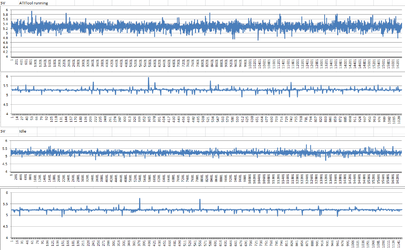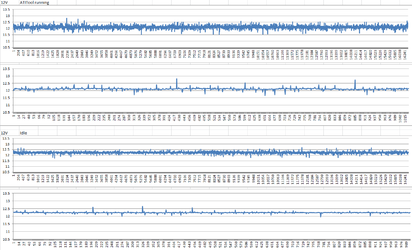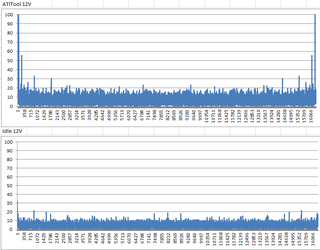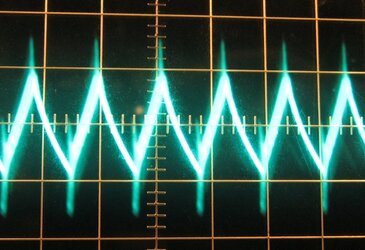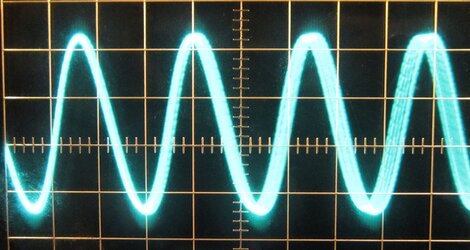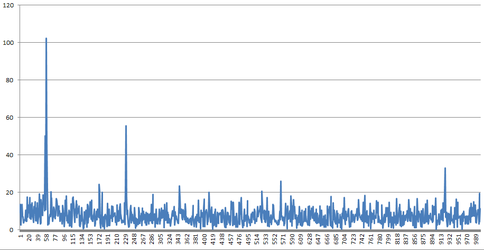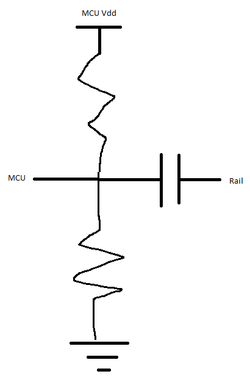- Joined
- May 23, 2008
- Location
- London, England
This is a continuation of the (derailed) discussion in this thread: http://www.overclockers.com/forums/showthread.php?t=711607
So the story is, I have a Corsair CX600 that powered my computer fine until I put in a new video card (from 560 Ti SLI to single 670). It can't be power draw because 2x560 Ti draw way more than a 670 (neither were overclocked).
However, with the 670, whenever the card is doing something, my computer would get all sorts of noise - audible noise of different frequencies from speakers, "wavy" lines on my VGA LCD, and even artifacts in ATI Tools.
My guess is the new video card's vreg PWMs at a frequency that the CX600's regulation loop is unstable at, and cause rail oscillation. I have not found proof for this.
Since I don't have an oscilloscope with me right now, I built a little circuit using a STM32 board I had lying around to plot the rails with the 670 running and without.
Unfortunately I didn't see any noticeable difference except bigger ripple. The rail regulation does look pretty bad, but I don't see any significant frequency component in the audible range. It could also be due to my ghetto setup (input capacitance, BW, etc), so I will hold off on blaming Corsair until I get a chance to test it on an oscilloscope (in about 2 weeks).
In the mean time, attached is what I saw. X axis is sample number. Sampling rate is 100kHz. In each group, the first graph is all samples (16000 samples), and second graph is zoomed in picture to where it looks like it's the worst.
The sampling circuit is powered by USB from a laptop running on battery (to make sure rail oscillation won't affect the measurement circuit).
I will be very disappointed if these measurements turn out to be valid. Yes, CX600 is their low end series, but it also bears the Corsair name, and this is definitely not what I would expect Corsair quality to be.
So the story is, I have a Corsair CX600 that powered my computer fine until I put in a new video card (from 560 Ti SLI to single 670). It can't be power draw because 2x560 Ti draw way more than a 670 (neither were overclocked).
However, with the 670, whenever the card is doing something, my computer would get all sorts of noise - audible noise of different frequencies from speakers, "wavy" lines on my VGA LCD, and even artifacts in ATI Tools.
My guess is the new video card's vreg PWMs at a frequency that the CX600's regulation loop is unstable at, and cause rail oscillation. I have not found proof for this.
Since I don't have an oscilloscope with me right now, I built a little circuit using a STM32 board I had lying around to plot the rails with the 670 running and without.
Unfortunately I didn't see any noticeable difference except bigger ripple. The rail regulation does look pretty bad, but I don't see any significant frequency component in the audible range. It could also be due to my ghetto setup (input capacitance, BW, etc), so I will hold off on blaming Corsair until I get a chance to test it on an oscilloscope (in about 2 weeks).
In the mean time, attached is what I saw. X axis is sample number. Sampling rate is 100kHz. In each group, the first graph is all samples (16000 samples), and second graph is zoomed in picture to where it looks like it's the worst.
The sampling circuit is powered by USB from a laptop running on battery (to make sure rail oscillation won't affect the measurement circuit).
I will be very disappointed if these measurements turn out to be valid. Yes, CX600 is their low end series, but it also bears the Corsair name, and this is definitely not what I would expect Corsair quality to be.
